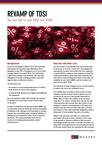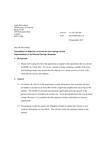[Banking] Mazars comments to HMRC on the Personal Savings Allowance
Mazars’ comments to HMRC (see PDF below) on some of the issues and benefits foreseen with the implementation of this allowance are summarised below.
Overall
The new allowance has the potential to create further tax inconsistencies as tax may be chargeable on some forms of interest and not others. This could confuse the people it is supposed to help, especially where tax has traditionally been deducted at source, and where the individuals have no prior experience of dealing with HMRC directly. Customer confusion would be likely to result in increased contact from individuals with both banks and HMRC.
Benefits for the savings industry
It is estimated that 95% of taxpayers will no longer be liable to tax on their savings. Banks will no longer have to keep declarations from customers with no liability to tax. Nor will they have to monitor not ordinarily resident (NOR) declarations, also reducing the burden on banks, meaning that this will significantly reduce banks’ workloads.
Potential burden on HMRC
For many people, this will be the first time that they have tax liabilities which have not been deducted at source. They may either need to complete Self Assessment tax returns for the first time or could find that their tax code has changed at short notice. This is likely to result in many more people contacting HMRC for help.
The numbers may also increase over time – as interest rates rise to normal levels – unless the personal savings allowance rises in parallel. People close to the threshold (and especially those close to the higher-rate band) may be unsure of the impact. Mazars proposes a transition period when adjustments take place through PAYE, based on the previous years’ interest.
Make it clear if a payment is or includes ‘interest on savings’
Only ‘interest on savings’ is eligible for inclusion in the PSA allowance, but it may not always be clear whether a payment is or includes ‘interest on savings’. Mazars recommends that a statement is made available to the account holder, clearly showing the amount of ‘savings interest’ falling within the scope of the PSA. One example where confusion can arise is where redress payments are made to an account.
Mazars suggests that it would be much easier to collect tax in redress situations if the bank agrees with HMRC to make the payment covering the recipient’s potential liability.
Savings interest on life policies
Mazars recommends keeping the current approach to gains on life policies, as this prevents double taxation, given that insurers will already have paid corporation tax on any gain. Any gain would be likely to take an individual over the allowance in any event.
Lack of time and resource
The timeframe for implementing the PSA is short, and it is being introduced at the same time as the UK is preparing for the Common Reporting Standard and the first returns under the UK Crown Dependencies agreements. The issue is whether banks will have sufficient technical and IT resource to implement the changes given other regulatory developments.


